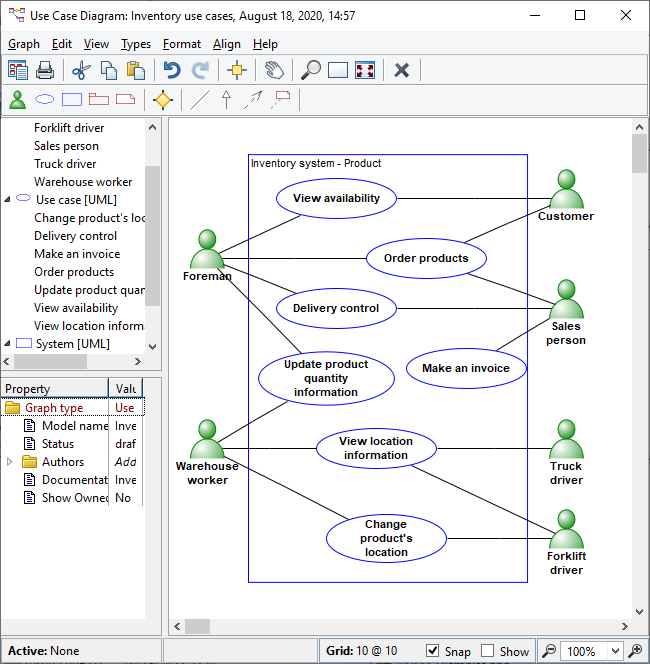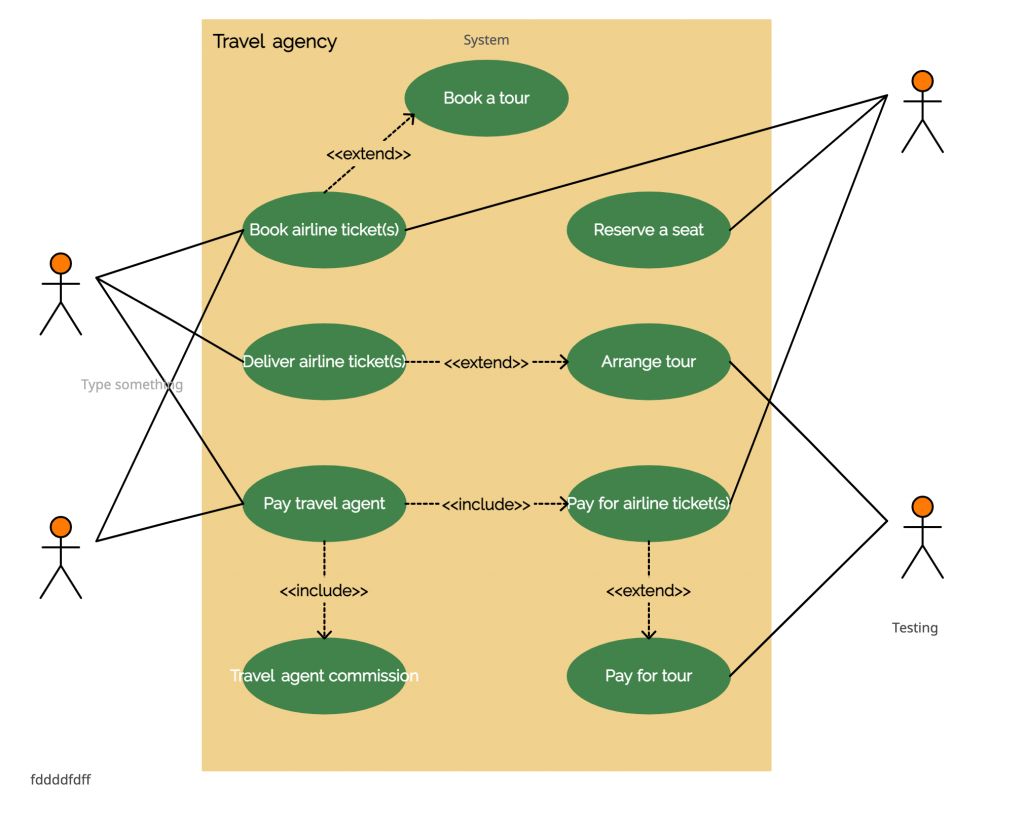
- #Use case diagrams examples how to
- #Use case diagrams examples software
- #Use case diagrams examples series
Most simple diagrams only contain a few key elements, which are: ActorsĪctors are the individuals that can interact with a given system. There are a few components that every use case diagram likely includes. Use case diagrams apply different symbols as visual representations of the relationships between components. Modelling the behaviour of different actorsĮxposing areas where you can simplify or improve interactions with users

Understanding how different users interact with a system Use case diagrams can also be a useful tool for:
#Use case diagrams examples software
Use case diagrams are popular in software development but can be practical for analyzing manufacturing, sales, or retail systems. These kinds of diagrams are useful in the early stages of the systems' design process, but you can also use them to develop a greater understanding of a current system. Use case diagrams are useful when you want to understand how a system works holistically, as they usually provide a general overview. Related: What Is Organizational Effectiveness? (With Steps and Tips) When to use a use case diagram Write any notes that you have and move through the process again, making changes where necessary. Ensure that all actors and use cases have a clear representation. It's beneficial to look for ways to simplify and improve your diagram. Most use case diagrams focus on one major system with several sub-modules. Connect the actors to the use cases that they interact with and use boundary lines to determine the borders of each system.

This is where you can explore how your system functions. Structure the use cases with boundaries and associations
#Use case diagrams examples series
Create a series of ovals in the centre of the diagram and label them with your use cases. Each goal or action that functions independently becomes a use case. These goals become the key areas of interaction in this model. It's beneficial to propose as many goals and behaviours as you consider, because you can combine any related scenarios in the next step.

Knowing this helps get all relevant use cases that a given actor might have. Next, identify the tasks users might complete before achieving their desired outcome. Business Systems Analyst: Differences and Similarities 2. Most diagrams place the actors on the right and left sides of the diagram. Try to label actors with broad categories, such as users, employees, or vendors. The first step is to determine the users and who interacts with your system. You can follow these steps to create an effective use case diagram example: 1. Use case diagrams don't show the order of events and don't include a hierarchy of actors or uses.

If you're including too much detail, it might be beneficial to reduce any unnecessary elements. The diagram represents users and lines connecting them to certain areas where they interact with a business, and use cases are the points of interaction.Ĭreating a use case diagram provides a very high-level overview. Use case diagrams display relationships and interactions in a way that allows for a greater comprehension of the system. Use case diagram examples are visual representations of how users, or actors, interact with a given system.
#Use case diagrams examples how to
In this article, we discuss how to create use case diagram examples, review when to use this type of visual diagram, explore its elements, and share some examples. By reviewing some use case diagram examples, you can improve your design and development process. In Unified Modelling Language (UML), use case diagrams can simplify the interactions within complex systems and data. Creating a diagram can be a useful way to visualize complex ideas or processes.


 0 kommentar(er)
0 kommentar(er)
